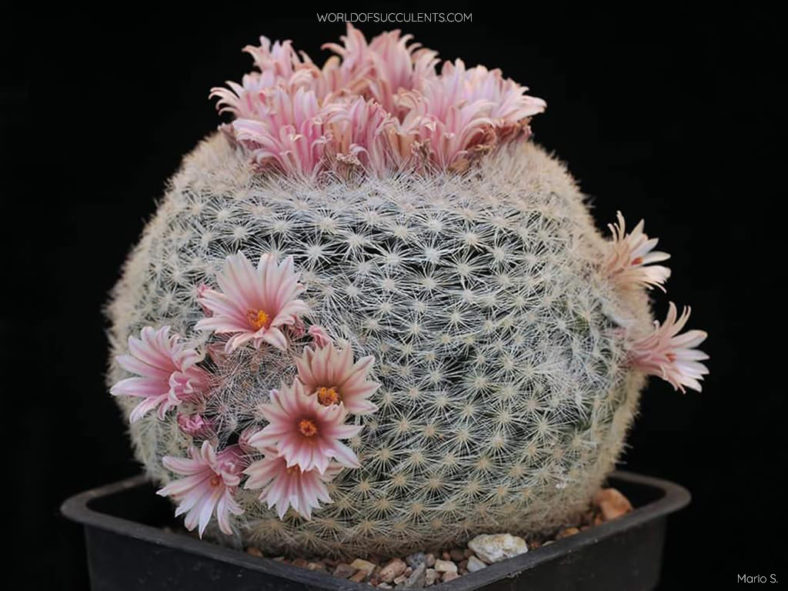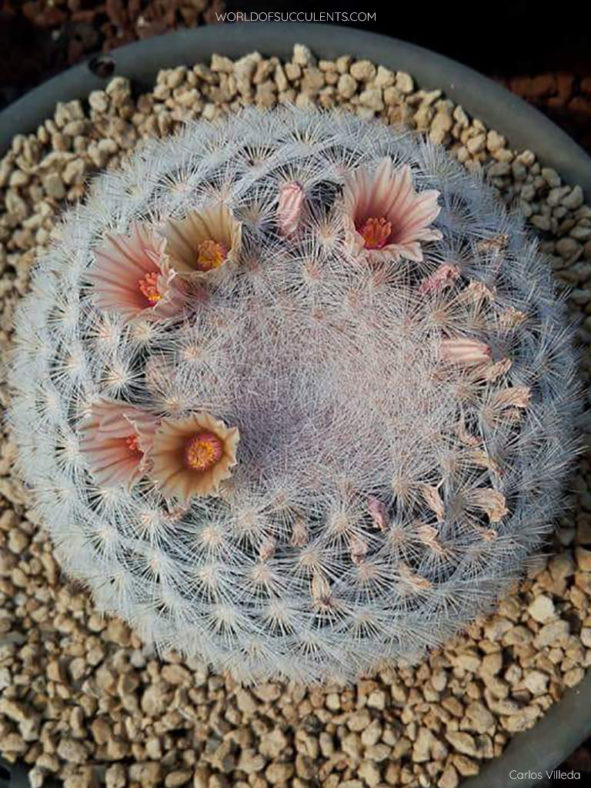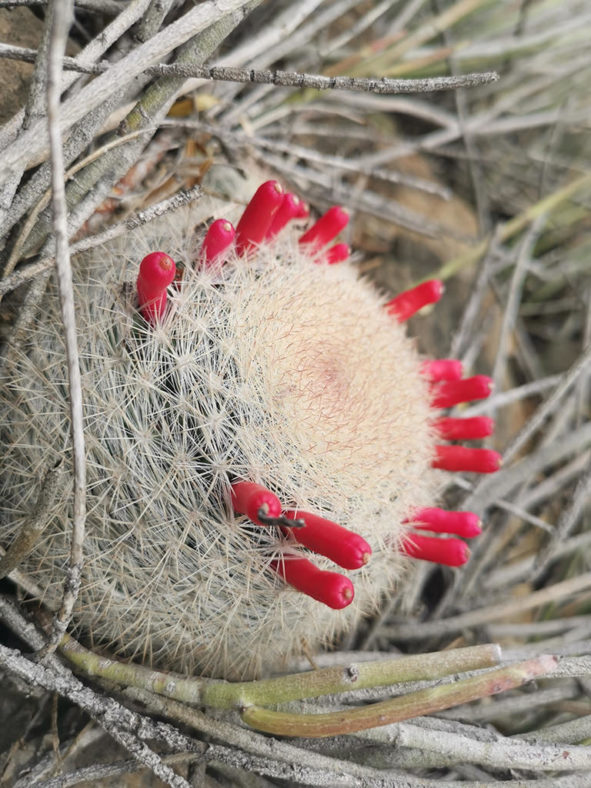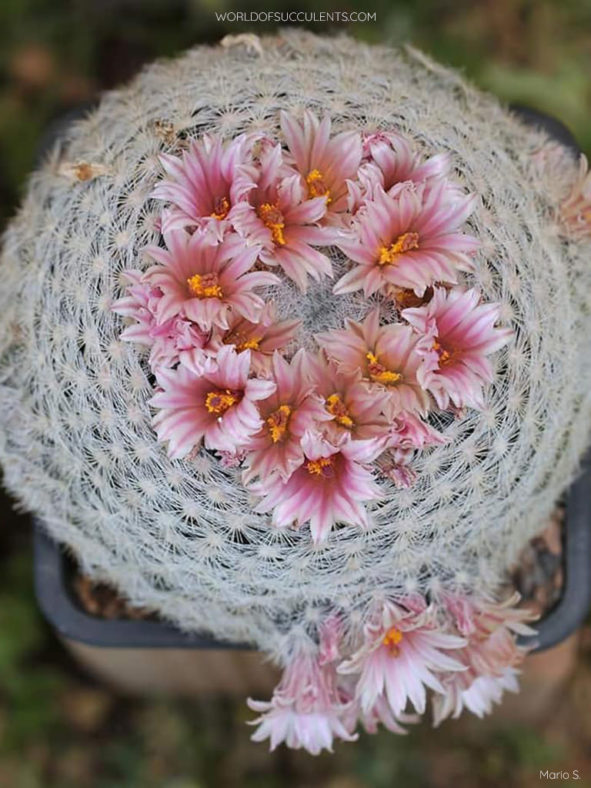Scientific Name
Mammillaria candida Scheidw.
Common Name(s)
Snowball Cactus, Snowball Pincushion
Synonym(s)
Chilita candida, Mammillaria estanzuelensis, Mammilloydia candida, Neomammillaria candida
Scientific Classification
Family: Cactaceae
Subfamily: Cactoideae
Tribe: Cacteae
Subtribe: Cactinae
Genus: Mammillaria
Etymology
The specific epithet "candida (pronounced KAN-did-uh)" means "shining white" and refers to the stems almost completely covered with white spines.
Origin
Mammillaria candida is native to northeastern Mexico. It occurs in Coahuila, Nuevo Leon, Tamaulipas, San Luis Potosi, and Guanajuato. The plant grows in the thickets of xerophytic shrubs on calcareous soils at elevations between 1,600 and 8,200 feet (490 and 2,500 m).
Description
Mammillaria candida, also known as Mammilloydia candida, is a small cactus with solitary or clustered stems densely covered with white spines. The stems are spherical, becoming cylindrical with age, and can grow up to 12 inches (30 cm) tall and 8 inches (20 cm) in diameter. The tubercles are broadly cylindrical, measuring up to 0.25 inches (0.6 cm) long, and have wooly areoles at the tips and 4 to 7 white bristles in the axils. Each areole bears 6 to 12 central and 5 to 120 radial spines. The central spines are white to pinkish-white, often with pink or brown tips, and can measure up to 0.4 inches (1 cm) long, while the radial spines are white and can grow up to 0.6 inches (1.5 cm) long.
The flowers are funnel-shaped and can reach up to 1.2 inches (3 cm) in length. They are pale yellow to pale pink with a darker stripe along the middle of the petals and appear in spring. The fruits are club-shaped, red or pinkish, and contain tiny black seeds. They can grow up to 0.6 inches (1.5 cm) long.

How to Grow and Care for Mammillaria candida
Light: Plant this cactus in an area of your garden that receives 4 hours of direct sunlight daily. If you are growing M. candida indoors, place it near the brightest window in your home or office to ensure your cactus gets enough light. Place the pot on the balcony or in the garden for extra light from spring to fall if possible.
Soil: M. candida requires a soil mix that provides root aeration and good drainage, whether grown outdoors or indoors. Use a commercial cactus potting mix, or create your own.
Temperature: This cactus is heat tolerant but is not a cold-hardy plant. M. candida can withstand temperatures as low as 25 °F (-3.9 °C). USDA Plant Hardiness Zones 9b to 11b, 25 to 50 °F (-3.9 to 10 °C).
Watering: From spring to fall, water deeply and wait for the soil to dry before watering again. Never let the pot sit in water. Suspend watering in the winter.
Fertilizing: M. candida can benefit from fertilizing during the growing season. Apply a water-soluble fertilizer for cacti and other succulents. Suspend feeding during the winter when the plant goes dormant.
Repotting: Repot every two or three years into a slightly larger pot. The best time to repot your M. candida is late winter or early spring, but the repotting process can be done almost any time of the year.
Propagation: There are two easy ways to propagate M. candida: by seeds or dividing offsets. The best time to remove offsets is in spring and summer. Sow the seeds in late spring or summer.
Learn more at How to Grow and Care for Mammillaria.
Toxicity of Mammillaria candida
M. candida is considered non-toxic to both humans and pets.
Links
- Back to genus Mammillaria
- Succupedia: Browse succulents by Scientific Name, Common Name, Genus, Family, USDA Hardiness Zone, Origin, or cacti by Genus
Photo Gallery
Click on a photo to see a larger version.


